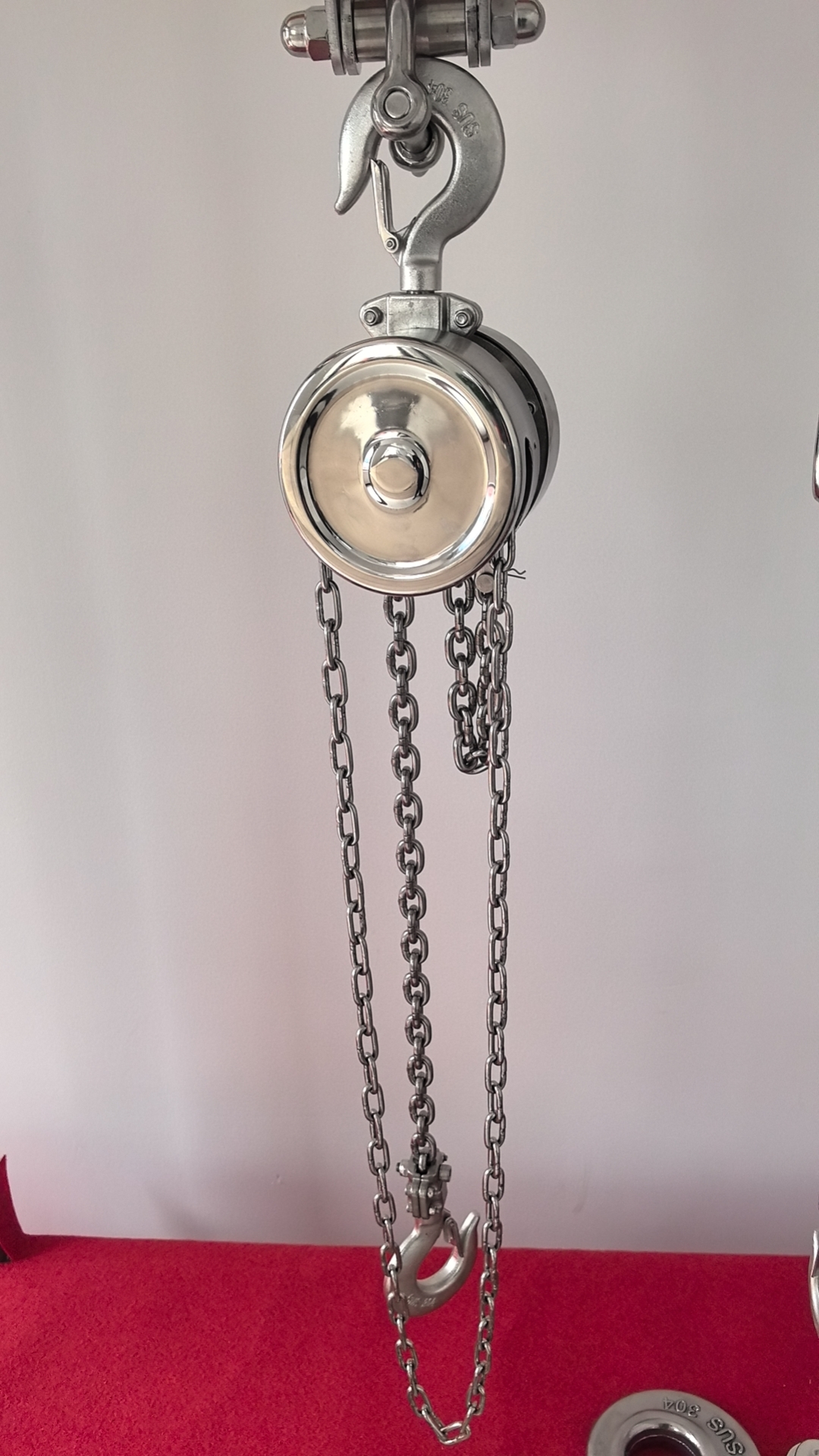Our staff will contact you within 12 hours, You can also contact us through the following ways:
Contact US WhatsApp: +86 18263873187
- Email: [email protected]
- Tel: +86 18263873187
- Web: www.lifting-chain.com
Rust destroys safety margins fast, yet many heavy lifts happen where blood enzymes, strong acids, or salt spray rule the air. Topone stainless G80 lifting chain answers that challenge. Nitrogen-alloyed 316LN drives yield past 640 MPa while its austenitic matrix blocks chloride pitting, letting one link carry 4 : 1 design loads and stay spotless without paint. This guide unpacks the metallurgy, shows the full size matrix, and explains a six-step selection flow you can finish in a minute. Read on and lift smarter in slaughter halls, chemical reactors, salt caverns, or rolling seas.
Topone starts with 316LN billet, cold-draws each bar forty percent, bends hot at 200 °C, flash-butt welds inside an argon shroud, solution-anneals at 1 050 °C, then water-quenches in eight seconds. The sequence traps nitrogen, refines grains, and locks chromium in solid solution, so every link shows:
Yield ≥ 640 MPa Tensile ≥ 800 MPa Elongation ≥ 25 %
Charpy ≥ 45 J at −20 °C—essential on winter decks
PREN ≥ 28—no pitting in 3.5 % NaCl after 72 h ASTM G48
No coating, zinc, or phosphate touches the chain. Smooth stainless cleans fast, stays food-safe, and never flakes.
Ø mm | Pitch mm | Inside W min mm | Outside W max mm | WLL kg | Proof kN | Break kN | Mass kg / m |
6 | 18 | 7.8 | 22.0 | 1 400 | 35 | 56 | 0.82 |
8 | 24 | 10.4 | 29.5 | 2 500 | 63 | 100 | 1.55 |
10 | 30 | 13.0 | 37.0 | 4 000 | 98 | 160 | 2.35 |
13 | 39 | 16.9 | 48.0 | 6 700 | 166 | 270 | 3.95 |
16 | 48 | 20.8 | 59.0 | 10 000 | 251 | 430 | 5.90 |
Table 1 – Topone stainless G80 lifting chain dimensions and capacities.
Field | Daily Threat | Stainless G80 Advantage | Core Task |
Slaughter halls | Blood, steam, sanitiser | Non-magnetic surface cleans without rust | Hoist carcasses, drive overhead rails |
Chemical reactors | Acid fumes, CIP wash | Austenite resists HCl, HNO₃, NaOH | Swap filter beds, lift agitator shafts |
Salt mines | Brine mist, halite grit | High PREN stops pitting, smooth links ignore grit | Drag washer drums, haul brine pumps |
Offshore decks | Wave slam, sub-zero wind | 45 J impact energy guards against brittle snaps | Handle ROV tethers, anchor tools |
Write the heaviest daily load.
Add chain plus hook weight and ten-percent margin.
Multiply by the EN 818-4 angle factor (1.4 at 45°, 2.1 at 60° four-leg).
Open Table 1 and pick the first diameter whose WLL beats that tension.
Check outside width against hook throat and headroom.
Log the stamped code “8-SS-TPN + heat” in your inspection app.
Run the six steps and hit strength targets without oversizing.
Diameter—scrap at ten-percent wear.
Five-link pitch—retire at three-percent stretch.
Eddy-current scans catch weld cracks because stainless stays non-magnetic, and light oil after washdowns halves galling during the chain’s five-year duty window.
Click on the image to learn more↓
 https://www.lifting-chain.com/grade-80-series/
https://www.lifting-chain.com/grade-80-series/
Sticker price runs higher than painted alloy links, yet three-year field logs show stainless chains in slaughter plants and offshore cranes outlasting carbon G80 by at least triple, so total cost per tonne lifted drops 30 % once downtime and repaint labour enter the calculation.
Move heavy loads through blood, acid, brine, or breakers and keep every link shining—choose Topone stainless G80 lifting chain today.